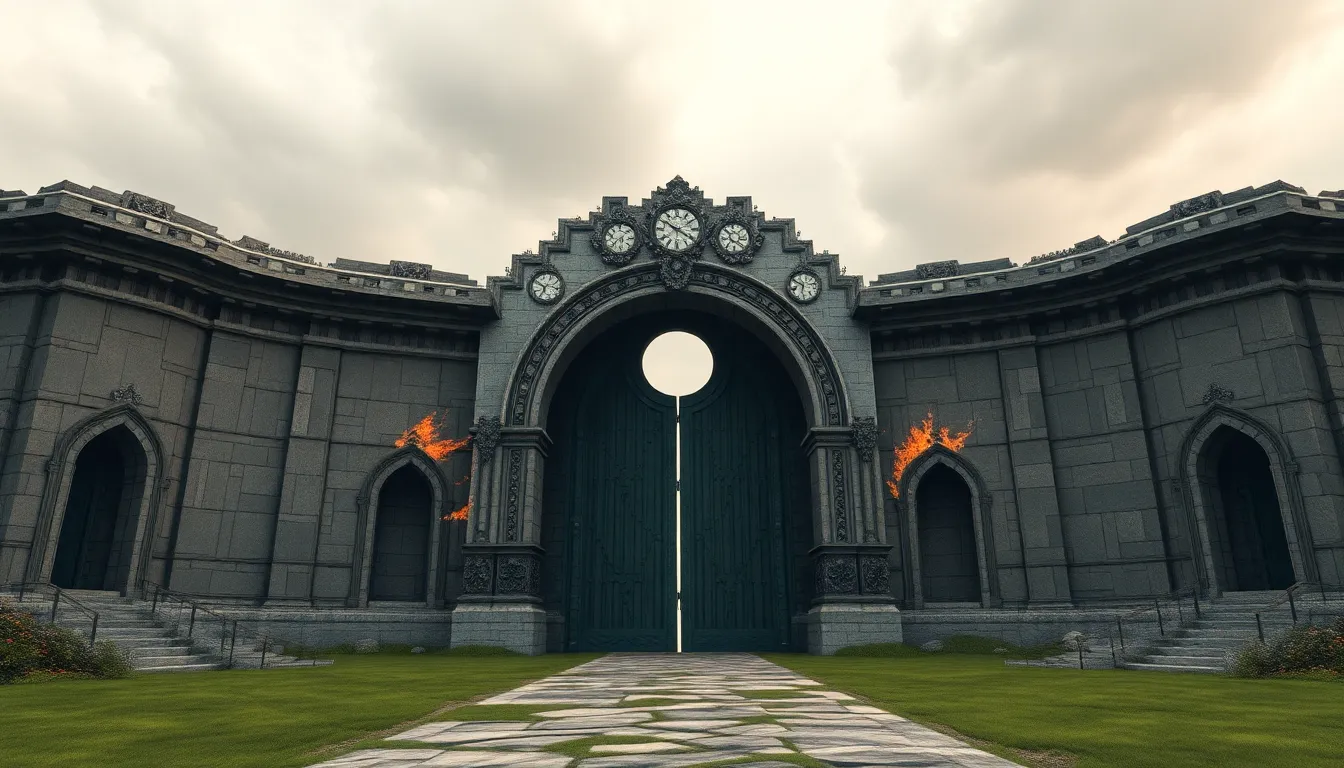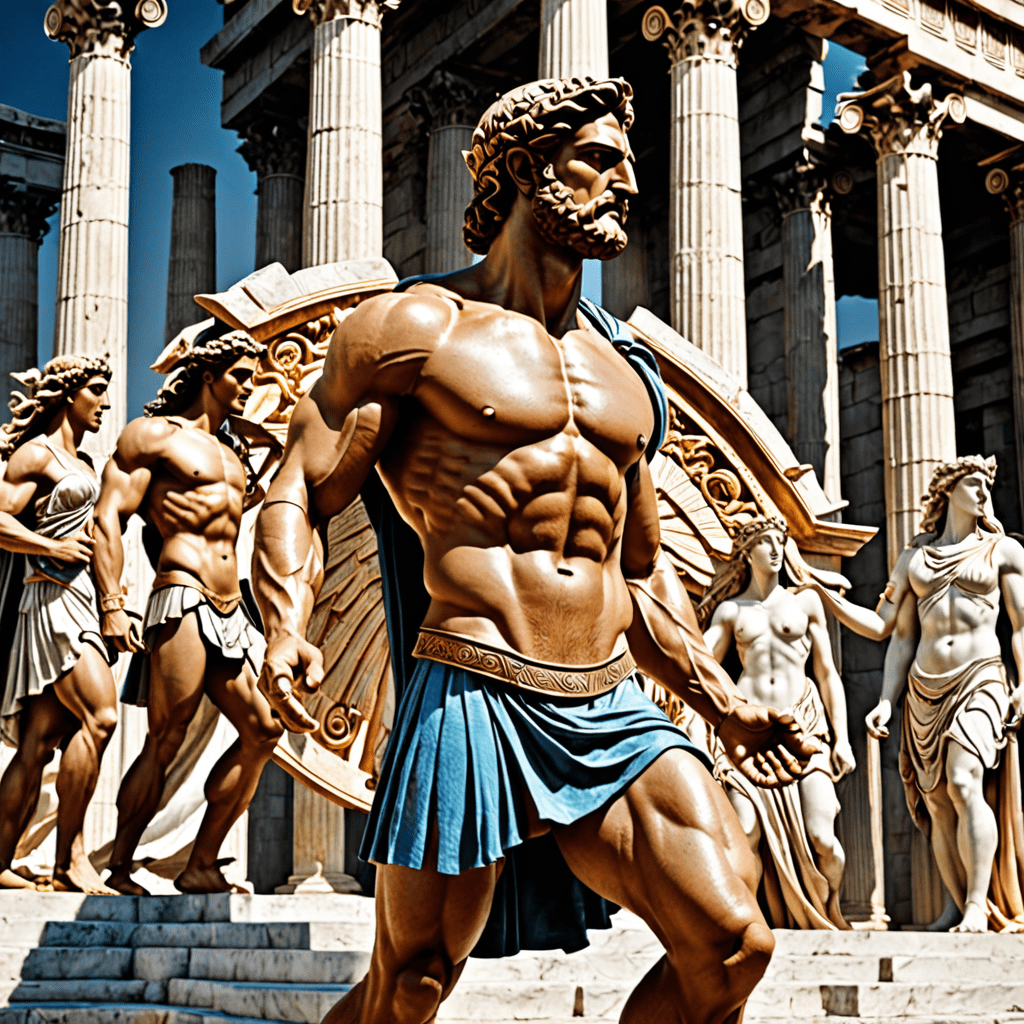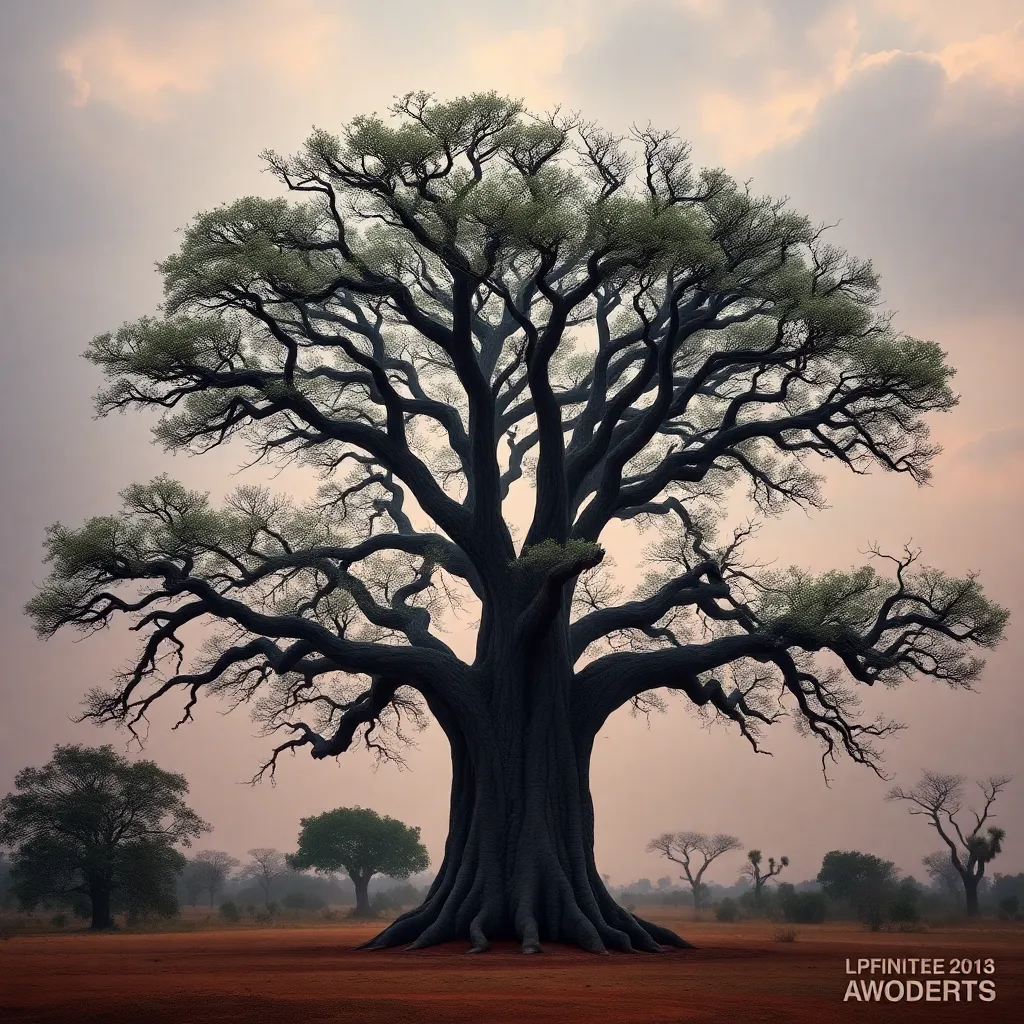The Sacred Gates: Entrances to Mythical Realms
Introduction: The Allure of Sacred Gates
Throughout history, sacred gates have captivated the imagination of cultures around the world. These entrances are not merely physical structures; they represent significant thresholds between the mundane and the divine, the known and the unknown. In various cultures, sacred gates serve as portals to mythical realms, embodying the hopes, fears, and beliefs of societies. The allure of these gates lies in their promise of adventure, transformation, and access to realms beyond our comprehension.
Historical Context: The Origins of Sacred Gates
The concept of sacred gates can be traced back to ancient civilizations, which often believed that such entrances were guarded by deities or spirits. These gates were seen as points of transition, where the earthly realm meets the spiritual. For instance, in many mythologies, the Gates of Heaven are depicted as celestial barriers that separate the mortal world from the divine. Ancient Egyptians believed in the concept of the Duat, a gateway to the afterlife, which was essential for the journey of the soul.
Cultural Significance: Sacred Gates Across Civilizations
Across different civilizations, sacred gates hold immense cultural significance:
- Egyptian Mythology: The Gates of the Duat were crucial for the deceased to navigate the underworld.
- Greek Mythology: The gates to the Underworld, guarded by Cerberus, were vital passages for souls.
- Hindu Beliefs: The concept of the Rudra Gati represents gates to different planes of existence.
These gates play a pivotal role in rituals and ceremonies, marking significant transitions in life, death, and rebirth. They often symbolize the passage from one state of being to another, emphasizing the importance of these thresholds in spiritual practices.
Symbolism and Interpretation: What Sacred Gates Represent
Sacred gates embody a duality, representing thresholds between contrasting realms:
- Life and Death: Gates often signify the transition from the physical world to the afterlife.
- Mortal and Divine: They can serve as barriers that separate humanity from the gods.
Psychologically, crossing a sacred gate can symbolize personal transformation and spiritual awakening. It represents the courage to confront the unknown, inviting individuals to explore their inner selves and their connections to the universe.
Mythical Realms Behind the Gates: A Closer Look
Behind many sacred gates lie extraordinary mythical realms, each with its own stories and legends:
- Asgard: In Norse mythology, Asgard is the realm of the gods, accessible via the Bifrost, a bridge protected by Heimdall.
- The Underworld: In Greek mythology, this realm is ruled by Hades and is home to the souls of the deceased.
- The Elysian Fields: Also in Greek mythology, this paradise is reserved for the heroic and virtuous.
These realms are not just places; they are rich tapestries of stories that reflect the values, fears, and aspirations of the cultures that envisioned them.
The Role of Guardians: Protectors of the Sacred Gates
Many sacred gates are depicted as being guarded by mythical creatures and figures, which serve as protectors of these important thresholds. Some notable guardians include:
- Cerberus: The three-headed dog of Greek mythology that guards the entrance to the Underworld.
- Anubis: The Egyptian god associated with mummification and the afterlife, guiding souls through the Duat.
- Yama: In Hinduism, Yama is the god of death who oversees the passage of souls to the afterlife.
These guardians symbolize the challenges and trials that must be faced when crossing into other realms, highlighting the importance of courage and wisdom in such journeys.
Modern Interpretations: Sacred Gates in Contemporary Culture
In contemporary culture, sacred gates continue to inspire literature, film, and art. They are often portrayed as mysterious portals to other dimensions, reflecting humanity’s ongoing fascination with the unknown. Notable examples include:
- Literature: Books like “The Chronicles of Narnia” depict gates that lead to fantastical worlds.
- Film: Movies such as “The Lion, the Witch and the Wardrobe” bring sacred gates to life on screen.
- Art: Artists often use gates as symbols of transition and transformation in their works.
The influence of fantasy genres has significantly shaped how these gates are perceived, blurring the lines between reality and imagination.
Personal Journeys: Sacred Gates in Spiritual Practices
In modern spiritual practices, gates serve as powerful symbols of transformation and personal growth. Many individuals engage with the concept of sacred gates in their spiritual journeys:
- Meditation: Practitioners may visualize crossing a gate as a means of entering a deeper state of consciousness.
- Rituals: Some ceremonies involve the symbolic crossing of a gate to signify a major life transition.
- Anecdotes: Many share personal experiences of feeling transformed after engaging with the symbolism of a gate.
These practices highlight the enduring relevance of sacred gates in facilitating personal and spiritual exploration.
Challenges and Controversies: The Misinterpretation of Sacred Gates
Despite their significance, the concept of sacred gates can sometimes be misinterpreted or appropriated. Issues surrounding cultural appropriation and commercialization of sacred symbols are prevalent:
- Cultural Appropriation: The use of sacred gates in a context that disrespects their cultural origins can lead to misunderstandings and offenses.
- Commercialization: The marketing of sacred symbols can dilute their meaning and significance.
It is vital to approach the concept of sacred gates with respect and an understanding of their cultural contexts to honor their deep-rooted significance.
Conclusion: The Enduring Legacy of Sacred Gates
The fascination with sacred gates and their connection to mythical realms remains timeless. They invite us to explore the boundaries of our understanding and to embark on personal journeys of transformation. As we navigate the complexities of modern life, the symbolism of sacred gates can inspire us to seek deeper connections with ourselves, our heritage, and the universe. The legacy of these gates serves as a reminder that the journey itself, with its challenges and revelations, is as significant as the destinations we seek.



